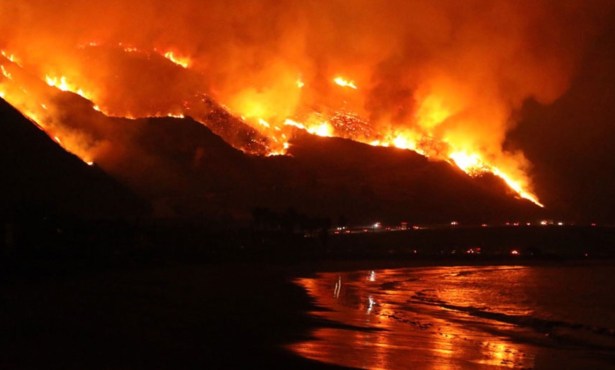An Acidic Ocean a Foregone Conclusion for Decades
West Coast Expected to Face Severe Changes to Ecosystems

The weight of time and tide will be combining to deliver about 30 years’ worth of extra-CO2-laden water to the shores of the West Coast through at least the next 30 years, even if atmospheric carbon dioxide emissions were to cease today. Undaunted, California’s Ocean Science Trust assembled 20 scientists to strategize on limiting, eliminating, and ameliorating the effects of increased acid levels and the loss of oxygen in ocean waters, including UCSB’s Gretchen Hofmann.
The world’s oceans absorb about a third of the atmospheric CO2 generated, according to the trust’s April 2016 report. It takes 30-50 years for waters to dive down from the Japan coast and travel to the North American continent, where the deeper ocean upwelling is aided by winds that push surface waters away from the shore. The deeper waters contain less oxygen and more CO2 from the breakdown of organic matter, plus the CO2 from human activity; the study concludes that the West Coast will face the earliest and most severe changes from acidification and hypoxia.
Decreased oxygen in ocean water has yet to be addressed by the multitude of initiatives, remediations, restorations, and other water resource requirements of municipalities and state and federal agencies. Ocean acidification only began to be included over the past five years.
UCSB Professor Hofmann’s studies of invertebrates and kelp may represent both the losing and winning sides in the larger oceanic problem. Species like oysters and snails are among the first to present with symptoms from the increasingly acidic ocean water: problems forming their shells. Kelp and seagrass are potentially able to absorb large amounts of CO2, and the report’s authors indicate that the carbon exchange market could fund projects like kelp or seagrass restoration or replenishment.
Though the future may hold a lot of small fry-eating jellyfish and the report warns further delay makes future interventions harder, its goal is to identify not only topics worth studying further but where resources and data could be pooled and efforts streamlined. Grants are coming available from sources like Proposition 1, the $7 billion water bond passed in 2014. The study lists a variety ways to use them with the hope that better science will lead to better management options.



